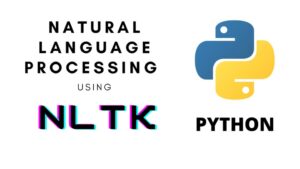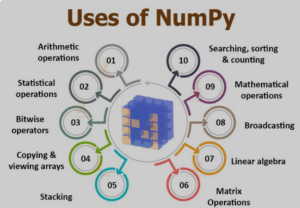Mastering Collaboration: A Comprehensive Guide to Leveraging YouTube’s Brand Collaboration Features

In the dynamic world of YouTube, collaboration has emerged as a powerful strategy for creators to expand their reach, foster community, and unlock new opportunities for growth. By partnering with fellow creators and brands, YouTubers can tap into each other’s audiences, share expertise, and create compelling content that resonates with viewers. YouTube’s brand collaboration features provide creators with a suite of tools and resources to facilitate partnerships, streamline collaboration workflows, and unlock the full potential of joint ventures. In this comprehensive guide, we’ll explore the ins and outs of leveraging YouTube’s brand collaboration features to partner with other creators effectively, maximize exposure, and create meaningful content that leaves a lasting impact on your audience.
Understanding YouTube’s Brand Collaboration Features: A Gateway to Partnership Opportunities
YouTube offers a range of features and tools designed to facilitate collaboration between creators and brands, empowering them to connect, collaborate, and create together seamlessly. From branded content partnerships to influencer marketing campaigns, these collaboration features provide creators with the resources and support they need to unlock new opportunities and elevate their content to new heights.
Key Brand Collaboration Features on YouTube:
- Branded Content Partnerships: Collaborate with brands and sponsors to create branded content that integrates seamlessly into your videos. YouTube’s branded content partnerships enable creators to disclose sponsored content transparently while providing brands with a platform to reach their target audience authentically.
- Merchandise Shelf: Showcase and sell branded merchandise directly on your YouTube channel using the Merchandise Shelf feature. Collaborate with brands to create custom merchandise or promote existing products to your audience, generating additional revenue streams and fostering brand loyalty.
- Super Chat and Super Stickers: Monetize live streams and premieres through Super Chat and Super Stickers, allowing viewers to purchase highlighted messages and stickers that stand out in the chat. Collaborate with brands to create branded Super Stickers or incorporate sponsored messages into your live streams, generating revenue while engaging with your audience in real-time.
- Channel Memberships: Offer channel memberships to your audience, providing exclusive perks, content, and community access to subscribers who join your channel as members. Collaborate with brands to offer branded membership perks or create custom badges and emojis for members, enhancing their experience and incentivizing subscription.
- YouTube Spaces: Gain access to YouTube’s state-of-the-art production facilities and resources through YouTube Spaces, where creators can collaborate, network, and bring their creative visions to life. Collaborate with fellow creators and brands in a collaborative environment, leveraging YouTube’s support and expertise to create high-quality content.
Strategies for Successful Brand Collaborations: Unlocking the Power of Partnership
Now that we’ve explored the various brand collaboration features available on YouTube let’s delve into the strategies and best practices for leveraging these features effectively to partner with other creators and brands. Whether you’re seeking to monetize your content, expand your audience, or enhance your creative capabilities, these strategies will help you navigate the collaboration process and unlock the full potential of partnership opportunities.
1. Define Your Objectives:
Before embarking on a brand collaboration, clarify your objectives and determine what you hope to achieve from the partnership. Are you looking to monetize your content, reach a new audience, or enhance your credibility and authority within your niche? Understanding your goals will guide the collaboration process and ensure that both parties are aligned in their expectations and objectives.
2. Identify Compatible Partners:
When seeking collaboration opportunities, identify creators and brands whose values, audience, and content align with your own. Look for partners who share similar interests, demographics, and aesthetic sensibilities, as well as complementary strengths and expertise. Conduct thorough research to ensure that potential partners are reputable, reliable, and aligned with your brand identity and values.
3. Craft Compelling Proposals:
When reaching out to potential collaborators, craft compelling proposals that clearly articulate the benefits of partnership and why they should collaborate with you. Highlight your unique value proposition, audience demographics, and past successes, demonstrating the potential impact of the collaboration on both parties. Tailor your proposals to the specific needs and objectives of each potential partner, showcasing your creativity, professionalism, and commitment to collaboration.
4. Be Transparent and Authentic:
Transparency and authenticity are key to building trust and credibility with potential collaborators. Clearly disclose any sponsored content or partnerships to your audience, ensuring that they understand the nature of the collaboration and its implications. Be honest and upfront about your intentions, expectations, and any potential limitations or constraints, fostering open communication and mutual respect throughout the collaboration process.
5. Collaborate Creatively:
Embrace creativity and innovation in your collaborations, exploring unique and unconventional ideas that resonate with your audience and showcase your creative talents. Brainstorm together with your collaborators to generate fresh and exciting concepts that push the boundaries of traditional content formats and deliver value to your audience. Experiment with different content styles, formats, and approaches to keep viewers engaged and entertained.
6. Deliver Value to Your Audience:
Above all, prioritize delivering value to your audience in every collaboration you undertake. Ensure that sponsored content aligns with your audience’s interests, preferences, and needs, providing them with valuable insights, entertainment, or solutions to their problems. Maintain a balance between sponsored and non-sponsored content, ensuring that your audience’s trust and loyalty remain intact.
Best Practices for Effective Collaboration: Tips and Tricks from the Pros
As you navigate the world of brand collaborations on YouTube, keep these best practices in mind to ensure successful partnerships and maximize the impact of your collaborations.
1. Establish Clear Expectations:
Communicate openly and transparently with your collaborators, establishing clear expectations, timelines, and deliverables from the outset. Clearly define the scope of the collaboration, roles and responsibilities, and any contractual agreements or terms of engagement. Ensure that both parties are aligned in their objectives and commitments, minimizing the risk of misunderstandings or disputes later on.
2. Maintain Professionalism and Integrity:
Maintain professionalism and integrity in all your collaborations, upholding your brand values and reputation at all times. Respect your collaborators’ time, resources, and creative input, and honor any agreements or commitments made during the collaboration process. Be responsive and communicative, addressing any concerns or issues promptly and professionally.
3. Promote Collaboration Ethically:
When promoting sponsored content or partnerships, adhere to YouTube’s guidelines and regulations regarding disclosure and transparency. Clearly disclose any sponsored content or partnerships to your audience in accordance with YouTube’s policies, ensuring that viewers understand the nature of the collaboration and any potential biases or conflicts of interest. Prioritize honesty, authenticity, and transparency in all your promotional efforts, maintaining the trust and credibility of your audience.
4. Measure and Evaluate Performance:
Track the performance of your collaborations using YouTube Analytics and other tracking tools to gauge their effectiveness and impact on your channel. Monitor metrics such as views, engagement, and audience retention to assess the success of your collaborations and identify areas for improvement. Gather feedback from your audience and collaborators to gain valuable insights into their preferences, interests, and opinions, informing future collaboration decisions and strategies.
5. Nurture Long-Term Relationships:
Invest in building long-term relationships with your collaborators, nurturing mutual respect, trust, and loyalty over time. Cultivate a network of trusted partners and collaborators who share your values, vision, and commitment to excellence, and collaborate with them on multiple projects to deepen your relationship and maximize the value of your partnerships. Foster a culture of collaboration and cooperation within your community, supporting and uplifting fellow creators and brands to achieve collective success.
Conclusion: Empowering Collaboration and Creativity on YouTube
In today’s interconnected world, collaboration has become an essential strategy for creators to expand their reach, amplify their impact, and unlock new opportunities for growth. By leveraging YouTube’s brand collaboration features, creators can connect, collaborate, and create together seamlessly, fostering a culture of innovation, creativity, and mutual support within the YouTube community. From branded content partnerships to influencer marketing campaigns, the possibilities for collaboration are endless, offering creators the chance to tap into each other’s strengths, resources, and audiences to create compelling content that resonates with viewers around the world. So, whether you’re seeking to monetize your content, expand your audience, or enhance your creative capabilities, embrace the power of collaboration on YouTube and watch as your channel flourishes, your audience grows, and your impact expands beyond your wildest dreams.




